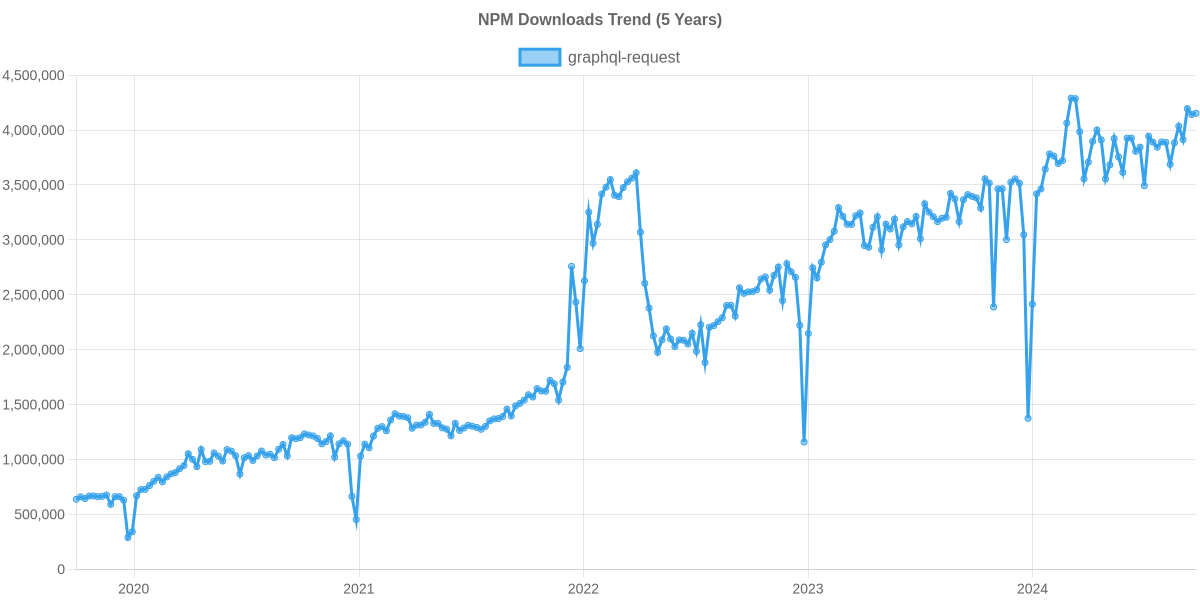Caching Mechanism
- graphql-request:
GraphQL Request does not include built-in caching features, making it a straightforward option for simple use cases. Developers must implement their own caching strategies if needed, which can be beneficial for small applications where complexity is not required.
- apollo-client:
Apollo Client offers a sophisticated caching mechanism that allows for normalized data storage, enabling efficient updates and retrieval of data. It automatically caches responses and can intelligently manage cache updates based on mutations, significantly improving performance and reducing network requests.
- urql:
Urql provides a flexible caching strategy that can be customized based on the needs of the application. It supports both local and global caching, allowing developers to choose how to manage data persistence and retrieval effectively.
Ease of Use
- graphql-request:
GraphQL Request is extremely easy to use, with a minimal API that allows developers to make requests with just a few lines of code. This makes it an excellent choice for beginners or for quick prototypes where simplicity is key.
- apollo-client:
Apollo Client is relatively easy to use, especially for those familiar with React, as it provides a set of hooks and components that simplify data fetching and state management. However, its extensive feature set may introduce some complexity for new users.
- urql:
Urql strikes a balance between ease of use and flexibility. It offers a straightforward API while allowing for customization through its plugin system, making it approachable for developers of varying skill levels.
Real-time Capabilities
- graphql-request:
GraphQL Request does not natively support real-time capabilities, as it focuses on making simple HTTP requests. Developers would need to implement additional solutions, such as WebSockets, for real-time functionality.
- apollo-client:
Apollo Client supports real-time capabilities through subscriptions, allowing applications to receive live updates from the server. This feature is essential for applications that require real-time data synchronization, such as chat applications or collaborative tools.
- urql:
Urql has built-in support for subscriptions, enabling real-time data updates. It provides a straightforward way to integrate real-time capabilities into applications, making it suitable for scenarios where live data is essential.
Extensibility
- graphql-request:
GraphQL Request is not designed for extensibility, as it focuses on providing a simple interface for making requests. This can be a limitation for applications that require more advanced features or integrations.
- apollo-client:
Apollo Client is highly extensible, allowing developers to integrate various middleware and plugins to enhance its functionality. This makes it suitable for complex applications that require custom behavior or integrations with other libraries.
- urql:
Urql is designed with extensibility in mind, offering a plugin system that allows developers to add custom functionalities easily. This makes it adaptable to different project requirements and use cases.
Community and Ecosystem
- graphql-request:
GraphQL Request has a smaller community compared to Apollo Client, but it is still well-documented and supported. Its simplicity attracts a niche audience looking for lightweight solutions.
- apollo-client:
Apollo Client has a large and active community, along with a rich ecosystem of tools and libraries, including Apollo Server and Apollo Federation. This extensive support makes it easier to find resources, tutorials, and community help.
- urql:
Urql has a growing community and is part of the larger GraphQL ecosystem. While not as extensive as Apollo's, it benefits from active development and contributions, making it a viable option for many developers.










